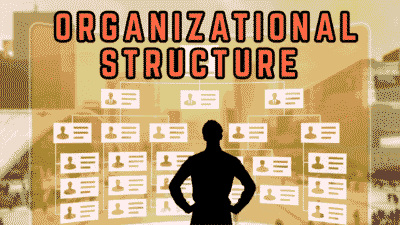Imagine an engineer, Sofia, receiving conflicting instructions. Her engineering department head wants her to focus on improving the quality of a specific component, while the manager of Project “Phoenix” needs her to accelerate the development timeline, even if it means using existing, less-perfect components. Who should she listen to? This scenario, common in dynamic workplaces, is precisely the challenge that a matrix organizational structure is designed to solve, transforming potential chaos into structured collaboration. This guide will walk you through exactly how to understand, implement, and thrive within this powerful framework.
A matrix organizational structure is a workplace format where employees report to more than one manager. Rather than the traditional, top-down hierarchy, a matrix structure combines two or more types of organizational structures, typically a functional structure and a project-based or product-based structure. Think of it as a grid, where you have your standard functional departments (like engineering, marketing, and finance) along one axis, and specific projects or products along the other. Employees, particularly specialists, are positioned at the intersections of this grid, reporting to both their functional manager and a project or product manager. This dual-reporting relationship is the hallmark of the matrix system.
1. How Does the Two-Boss System Actually Work?
The idea of having two bosses might sound confusing at first, but it becomes clearer when you understand their distinct roles. To implement this effectively, you must clearly define these roles from the outset.
- The Functional Manager: This is the head of a specific department, such as the Director of Engineering or the Head of Marketing. Their focus is on the long-term health and excellence of their department. They are responsible for managing the people within their function, providing training, conducting performance reviews, overseeing professional development, and ensuring that technical standards are met. They answer the question, “How is the work done?” by providing the skilled personnel.
- The Project or Product Manager: This manager is responsible for the successful completion of a specific project or the development of a product. Their focus is on the immediate goals, budget, and timeline of that initiative. They pull together a team of specialists from various functional departments to achieve a specific outcome. They answer the question, “What work needs to be done and when?”
For an employee like Sofia, her functional manager would be the Head of Engineering, who oversees her technical skills and career growth. Her project manager for Project “Phoenix” would oversee her day-to-day tasks related to that specific project.
2. What are the Core Benefits of a Matrix Organizational Structure?
Adopting a matrix organizational structure is a strategic decision. Companies that do so are often looking to solve specific operational challenges. Here is how you can leverage its advantages.
2.1. It Radically Improves Collaboration and Communication
By its very design, the matrix breaks down departmental silos. In a traditional structure, the marketing team might only interact with the engineering team through formal, slow-moving channels. In a matrix, a marketing specialist, an engineer, and a finance expert are all part of the same project team, reporting to the same project manager. This proximity fosters direct, frequent communication, leading to faster problem-solving and a more holistic approach to projects. Ideas are shared more freely, and team members gain a better understanding of how their work impacts other areas of the business.
2.2. It Allows for the Efficient Use of Resources
Specialized talent is a valuable asset. Instead of having a top expert permanently assigned to a single department where their skills might be underutilized, a matrix structure allows them to be deployed across various projects where they are needed most. For example, a leading data scientist can lend their expertise to Project A this quarter and then move to assist Project B in the next. This flexibility ensures that key skills are not locked away in one silo but are shared across the organization, maximizing their impact and providing a better return on investment.
2.3. It Fosters Skill Development and Employee Engagement
Working on diverse, cross-functional projects exposes employees to new challenges, perspectives, and ways of working. An engineer working alongside a marketing professional will learn more about customer needs, while the marketer will gain insight into technical constraints. This cross-pollination of knowledge accelerates learning and skill development. According to a 2022 study by the Gallup organization, employee engagement is strongly linked to having opportunities to learn and grow. The varied experience offered by a matrix structure can significantly boost job satisfaction and retention by keeping work interesting and challenging.
3. Navigating the Common Pitfalls: The Challenges of a Matrix
Despite its benefits, the matrix is not without its complexities. To succeed, you must proactively manage its potential downsides.
3.1. The Inevitable Potential for Conflict
The dual-reporting structure is the matrix’s greatest strength and its most significant weakness. The conflict Sofia faced is a classic example. The functional manager is pushing for quality (a long-term goal), while the project manager is pushing for speed (a short-term goal). These competing priorities can create stress and confusion for employees. Resolving this requires clear protocols. A successful implementation often involves a “tie-breaker” or a clear escalation path, where a senior manager can make a final decision when functional and project managers disagree.
3.2. A Tendency Towards Slower Decision-Making
Because a matrix involves multiple stakeholders, reaching a consensus can be time-consuming. Decisions that might be made by a single individual in a traditional hierarchy may require input and approval from two or more managers in a matrix. This can lead to what some call “analysis paralysis,” where too much time is spent in meetings and not enough on execution. To combat this, you must empower project managers with sufficient authority to make day-to-day decisions without needing constant approval from functional heads.
4. How to Implement a Matrix Organizational Structure: A Step-by-Step Guide
Transitioning to a matrix structure is not a simple flip of a switch. It requires careful planning and a phased approach.
4.1. Step 1: Clearly Define Every Role and Responsibility
Before launching, create a detailed charter or responsibility assignment matrix (often called a RACI chart – Responsible, Accountable, Consulted, and Informed). This document should explicitly state who has decision-making authority for every conceivable task. For instance:
- Who approves the project budget? (Likely the Project Manager, with input from the Functional Manager).
- Who conducts the employee’s annual performance review? (Typically the Functional Manager, but with significant feedback from the Project Manager).
- Who decides on the technical methods to be used? (Often the Functional expert, in alignment with project goals).
This clarity is the single most important factor in preventing conflict and confusion.
4.2. Step 2: Choose the Right Type of Matrix
Not all matrix structures are the same. They exist on a spectrum, and you should choose the one that fits your company’s needs.
- Weak Matrix: In this model, the Functional Manager retains most of the power. The Project Manager acts more like a coordinator or expeditor, with limited authority over the team. This is useful for smaller, less critical projects.
- Balanced Matrix: Here, power is shared more equally between the Functional and Project Managers. This is the “classic” matrix, but it also has the highest potential for conflict and requires the most effort to maintain.
- Strong Matrix: In this variation, the Project Manager has the majority of the power and authority. They have a dedicated project team and significant control over budget and personnel. The Functional Manager’s role is more supportive, providing technical expertise and resources as needed. This model is common in project-driven industries like aerospace and construction.
4.3. Step 3: Invest in Communication Tools and Training
Dual reporting demands excellent communication. You need to provide the tools and platforms that make it easy for information to flow freely. This includes project management software (like Asana, Trello, or Jira as of 2025), shared communication channels, and regular, structured meetings.
Furthermore, you must train your managers and employees on how to operate within a matrix. Managers need training in negotiation, conflict resolution, and influence without authority. Employees need to be trained on how to manage their time effectively and balance competing priorities from their two leaders.
5. Real-World Examples of the Matrix Organizational Structure in Action
To see how this works in practice, let’s look at some generic industry examples.
- A Global Engineering Consulting Firm: An engineer, David, specializes in bridge design. His functional manager is the Head of Structural Engineering, who ensures David is up-to-date on the latest building codes and software. However, David is currently assigned to a high-speed rail project in Southeast Asia. The manager for that project assigns his daily tasks, sets deadlines related to the rail line, and manages the project budget. David reports to both.
- A Pharmaceutical Company: A research scientist, Aisha, reports to the Head of Chemistry (her functional manager). At the same time, she is a key member of the team developing a new diabetes medication. The Product Development Manager for that specific medication oversees her research goals, tracks progress against the development timeline, and coordinates her work with other specialists from toxicology and clinical trials.
- A Software Development Company: A user interface designer named Chen is part of the “Creative Design” department. However, for the next six months, he is fully allocated to the team developing a new mobile banking application. The Product Manager for the banking app is effectively his primary manager for all tasks related to that product, while his departmental manager continues to oversee his professional growth as a designer.
Conclusion
The matrix organizational structure is not a simple solution, but it is a highly effective one for complex environments where collaboration and flexibility are paramount. It transforms the traditional, rigid pyramid into a dynamic grid, enabling businesses to respond quickly to market demands and leverage their internal talent more effectively. By returning to our engineer, Sofia, her dilemma is resolved not by choosing one boss over the other, but through a system where both managers’ goals are aligned. A well-implemented matrix provides a clear framework for them to negotiate—perhaps they agree on using a slightly modified existing component to meet the deadline, with a plan to upgrade it in the next product iteration. The matrix, when managed correctly, turns potential conflict into a conversation, and that conversation drives innovation and success.
Frequently Asked Questions (FAQ)
- What is the primary purpose of a matrix organizational structure?
Its main purpose is to manage large, complex projects and to share skilled resources across different functions. It breaks down departmental silos, improves interdepartmental communication, and allows for a more flexible and efficient allocation of talent. - What are the three types of matrix structures?
The three types are the Weak Matrix, where the functional manager has more power; the Balanced Matrix, where power is shared equally; and the Strong Matrix, where the project manager has the most authority. - Which famous companies use a matrix structure?
Many multinational corporations use some form of a matrix structure. Well-known examples include the global conglomerate Philips, which uses it to balance functional expertise with product divisions, and consumer goods giant Procter & Gamble (P&G), which organizes around both functions and product categories. - Is a matrix structure a good idea for a small business?
Generally, no. A matrix structure adds a layer of complexity and administrative overhead that is often unnecessary for a small business. Smaller companies typically benefit more from simpler, more direct hierarchical or flat structures. The matrix is best suited for larger organizations managing multiple complex projects simultaneously. - What is the biggest challenge of a matrix structure?
The biggest challenge is the potential for conflict and confusion arising from its dual-reporting system. Employees can receive competing priorities from their two managers, which can lead to stress and inefficiency if not managed with clear communication protocols and well-defined roles.
references
Warning: The provided links lead only to the specified content. Other areas of those sites may contain material that conflicts with some beliefs or ethics. Please view only the intended page. Note: The source links are available in English only.
- Indeed Nov 3, 2022 Author: Indeed Editorial Team Pros and Cons of the Matrix Organizational Structure.
Overview of advantages & disadvantages of matrix structures. :contentReference[oaicite:0]{index=0} - TeamBuilding Blog 2024 Author: TeamBuilding Matrix Organizational Structure: Advantages & Disadvantages.
Describes weak, balanced & strong matrix types; practical trade-offs. :contentReference[oaicite:1]{index=1} - G2 2023 Author: G2 Learning Team What Is Matrix Organization: Pros And Cons Explained.
Discusses dual reporting, decision-making & implementation challenges. :contentReference[oaicite:2]{index=2}







